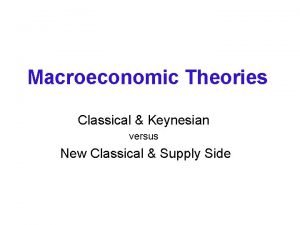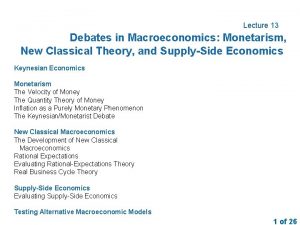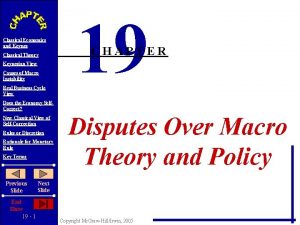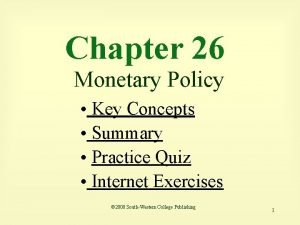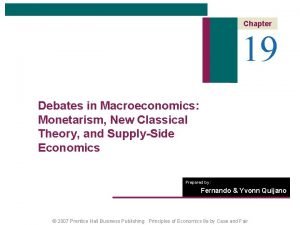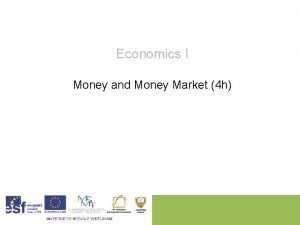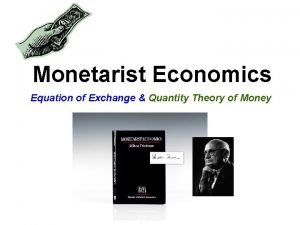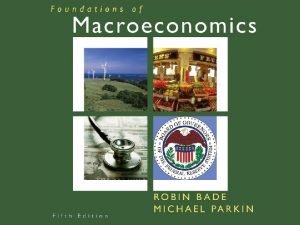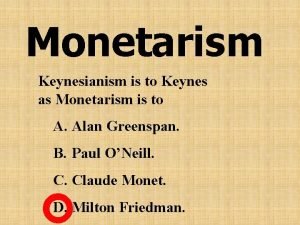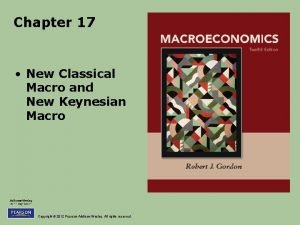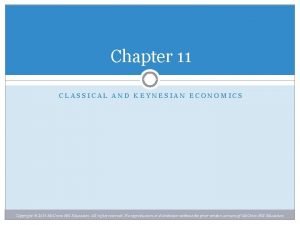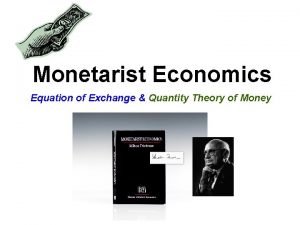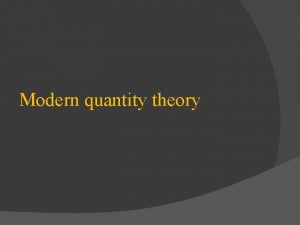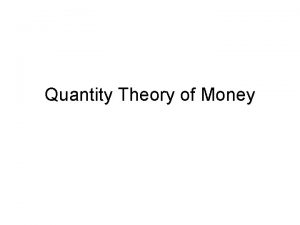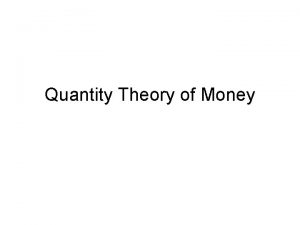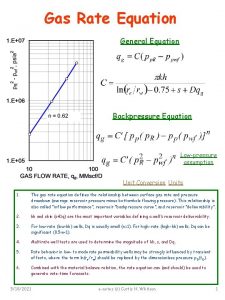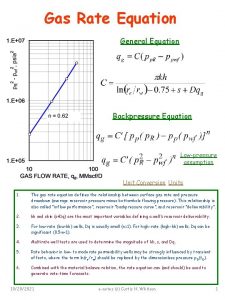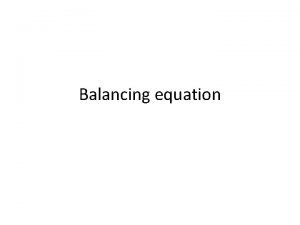Monetarist Economics Equation of Exchange Quantity Theory of











- Slides: 11

Monetarist Economics Equation of Exchange & Quantity Theory of Money

Quantity Theory of Money • What: Monetarist Theory which states the quantity of money determines the value of money (price level) – i. e. the primary cause of inflation is the growth of money supply • Implication: In long run, ↑ MS has no effect on real GDP – ↑ MS only raises price level “Inflation is always and everywhere a monetary phenomenon” Milton Friedman Leading Monetarist Economist

Monetarist Economics Potential GDP Actual and E D Monetarists believe printing money does NOT change full potential GDP Actual GDP A B C Time It only creates inflation! Monetarists do NOT support active monetary policy to adjust business cycle Copyright © 2003 South-Western/Thomson Publishing. All rights reserved.

Velocity of Money • The velocity of money is the number of times the average dollar bill is spent in a year – it has been relatively stable since 1960 – Monetarist economists assume velocity is stable • Velocity = Nominal GDP Money Supply (M 1) $19. 0 Trillion = 5. 2 times $3. 6 Trillion (M 1) • Determinants of velocity: – Efficiency of the payments system • If efficiency ↑ => Hold less money => Velocity ↑

Money Supply Growth Expansionary Monetary Policy ↑ Money Supply (M 1) $1 Trillion $3. 6 Trillion

Velocity Falling 10. 0 5. 2 In the “real world” Velocity of M 1 falling BUT we hold Velocity constant for monetarist theory

Equation of Exchange MV = PY (Equation of Exchange) where: V = Velocity P = Price level Y = Real GDP M = Money Supply Equation of Exchange Velocity is held constant PY = Nominal GDP

Monetarist Economists • Monetarist economists believe money is NEUTRAL • An increase in MS only raises price level (inflation) MV = PY Example: • • If M ↑ 20% then what happens to Velocity Price Level (P) Real GDP (Y) Nominal GDP (PY) Held constant (V held constant) ↑ 20% Unchanged ($ neutral) ↑ 20%

Example: Equation of Exchange • MV = PY M = $50 V = ? P = $10 • Calculate Velocity: – Velocity = 20 [ $50 X ___ = $10 X 100 ] – Nominal GDP = $1, 000 – R-GDP = 100 pizzas • If ↑ M doubled to $50 => $100: – price level (of pizza) would rise $10 => $20 – Nominal GDP ↑ $2, 000 – Real GDP unchanged (100 pizzas!) Y = 100 pizzas

Monetarist Conclusion • Monetarists believe MONEY IS NEUTRAL so MS has no effect on Real GDP – money does not increase the “full potential” of an economy to produce goods/services • Monetarists believe if the Fed ↑ MS, it causes a proportionate change in Nominal GDP (P Y) and no change in Real GDP – MV = PY No shift of PPF when MS↑ Hold V constant

Quantiy Theory of $ Handout
 Monetarist vs classical economics
Monetarist vs classical economics Lucas supply function
Lucas supply function Monetarist vs classical economics
Monetarist vs classical economics Monetarist vs classical economics
Monetarist vs classical economics Monetarist vs classical economics
Monetarist vs classical economics Quantity theory of money economics
Quantity theory of money economics Money growth formula
Money growth formula Milton friedman quantity theory of money
Milton friedman quantity theory of money Monetarist vs keynesian vs classical
Monetarist vs keynesian vs classical Keynesian vs classical vs monetarist
Keynesian vs classical vs monetarist Keynesian vs classical vs monetarist
Keynesian vs classical vs monetarist Economics keynesian vs classical
Economics keynesian vs classical
